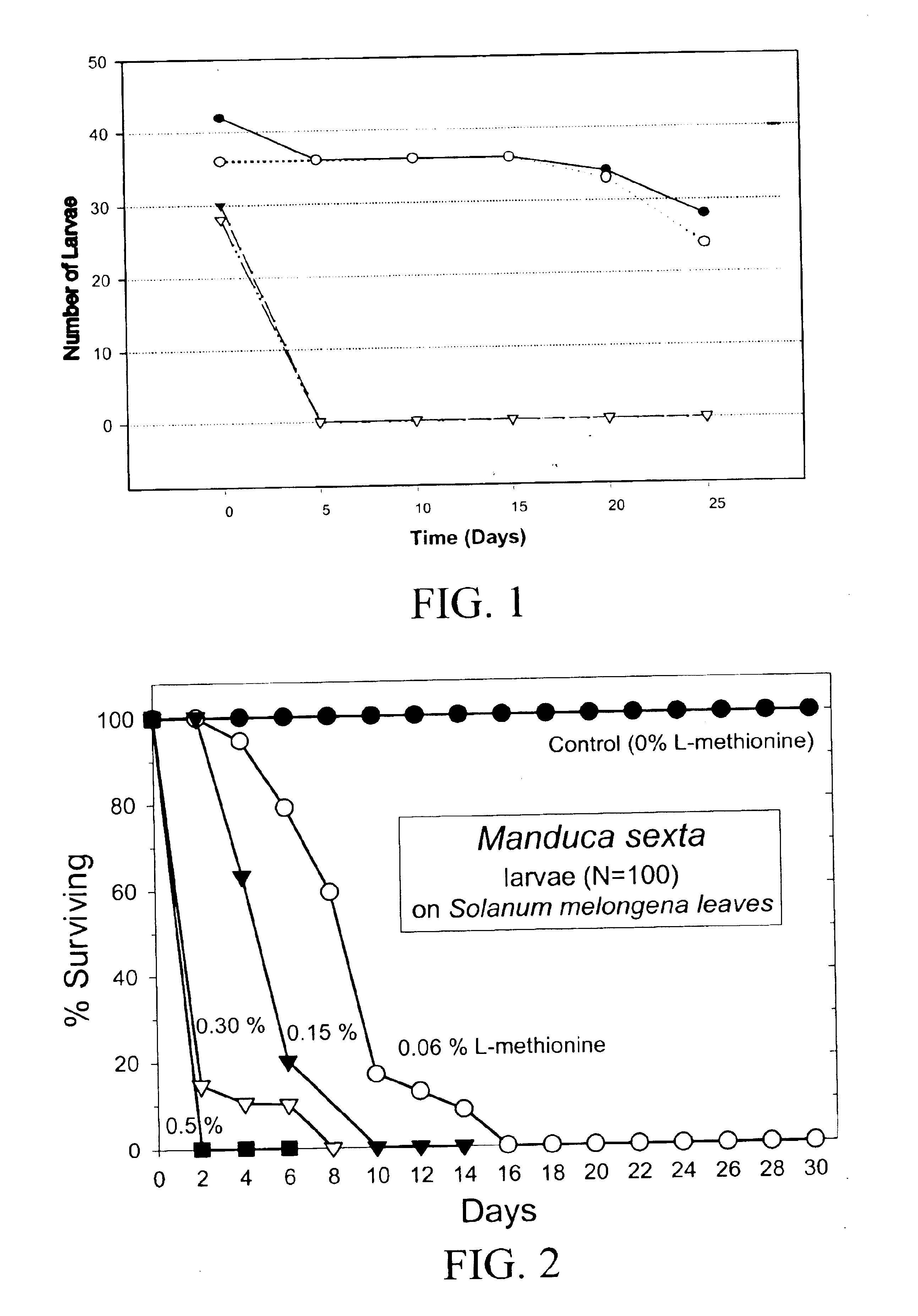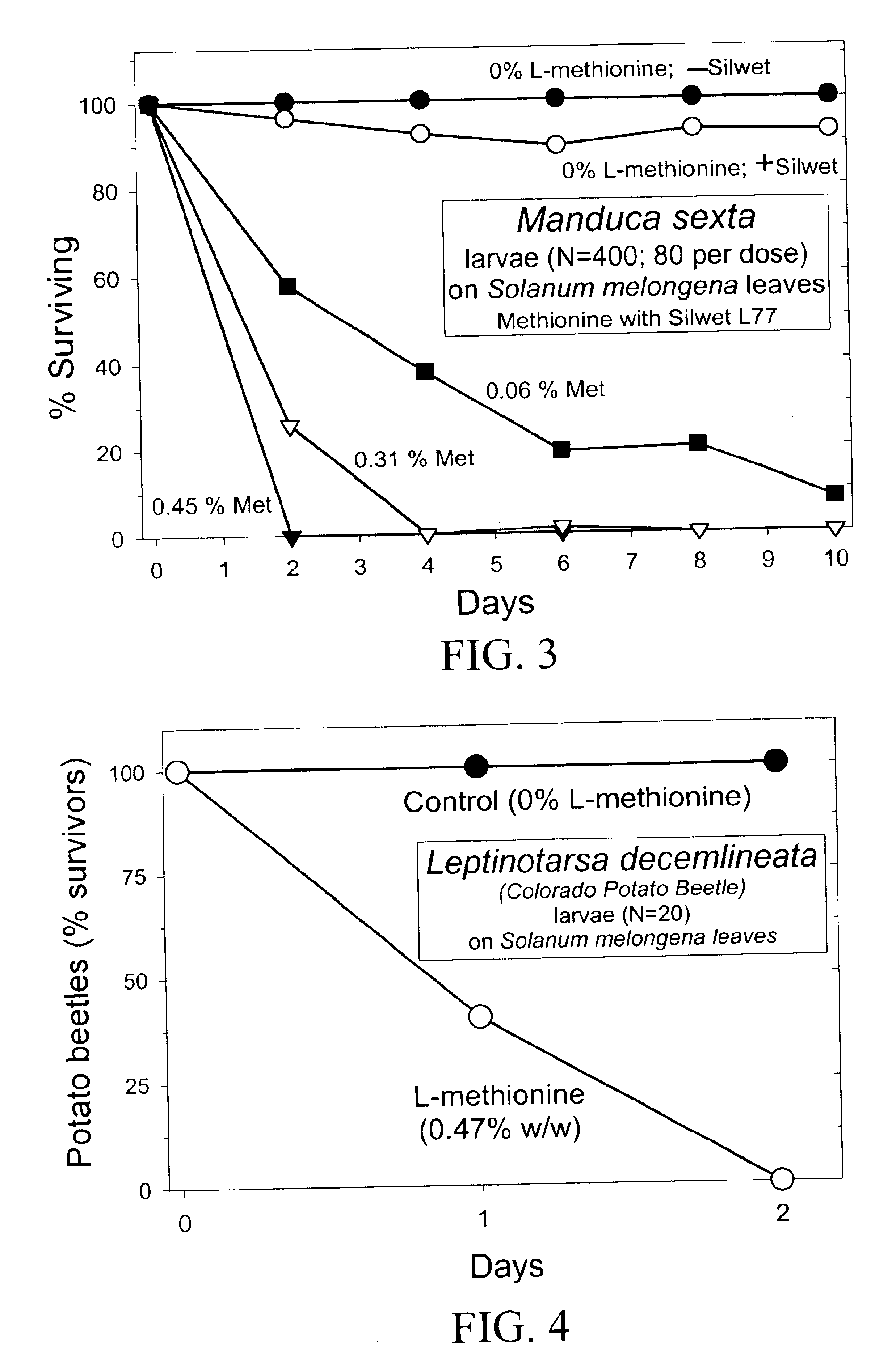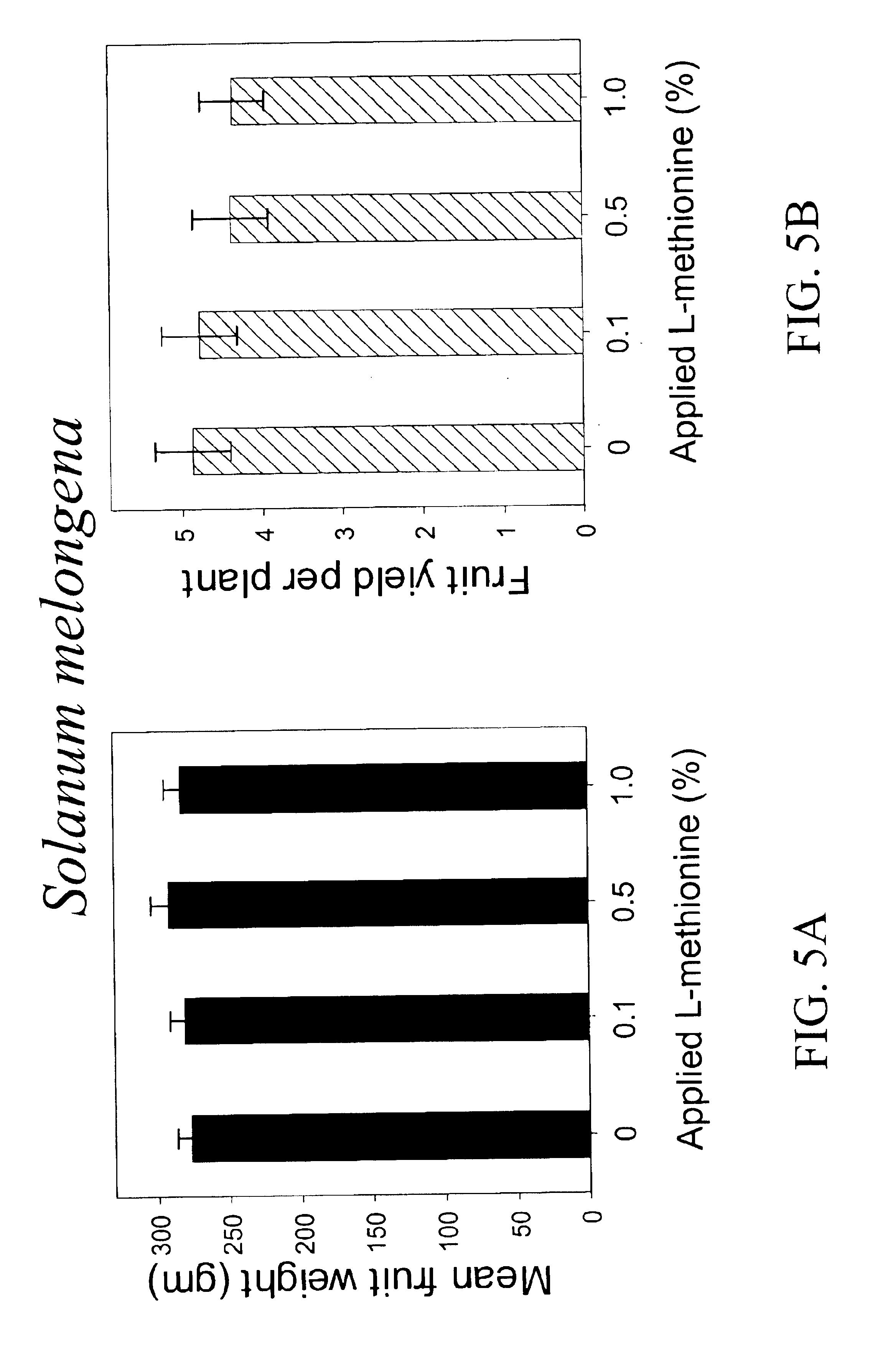Materials and methods for controlling pests
a technology applied in the field of pesticides and materials, can solve the problems of pest death and pest growth compromis
- Summary
- Abstract
- Description
- Claims
- Application Information
AI Technical Summary
Benefits of technology
Problems solved by technology
Method used
Image
Examples
example 1
Cloning and Characterization of a Ligand-Gated Ion Channel / Amino Acid Transporter
A full-length clone was isolated from a midgut cDNA library (in LambdaZap) derived from the fifth instar larval stage of M. sexta. The clone included 5' and 3' untranslated regions, in addition to a functional open reading frame. A strategy was employed using inosine degenerate primer touchdown PCR.TM. combined with specific primer based PCR.TM. screening of phage lysates to isolate the clone (denoted "CAATCH1"), with subsequent expression and extensive in vitro characterization of the expressed polypeptide product in membranes of Xenopus oocytes.
An initial set of inosine ("I")-containing degenerate primers was designed (Feldman et al., 2000, J. Biol. Chem. 275:24518-24526) to target conserved peptide motifs from invertebrate and vertebrate members of a subfamily of Na / Cl dependent transporters serving various neurotransmitters and amino acids (Griffith, J. K. and C. E. Sansom, 1998 In: The Transporter ...
example 2
DNA Sequence Analysis and Protein Functional Behavior
The complete sequence of the CAATCH1 cDNA clone, including 5' and 3' UTRs and the open reading frame encoding the predicted 633 amino acid polypeptide expression product, were obtained for Manduca sexta using a midgut cDNA library in LambdaZap phage. The Manduca CAATCH1 Genbank accession No. is AF013963 (SEQ ID NO:1).
The CAATCH1 nucleotide coding sequence within the full length clone of 2858 nt (SEQ ID NO:1) contained an open reading frame encoding a predicted unique polypeptide sequence of 633 amino acids (SEQ ID NO:2). The predicted amino acid sequence of CAATCH1 is compared to related members of a subfamily of membrane proteins that includes Na / Cl activated transporters of neurotransmitters (Quick, M. and B. R. Stevens, 2001, J. Biol. Chem. 276(36):33413-33418; Feldman et al, 2000, J. Biol. Chem. 275(32):24518-24526; Griffith, J. K. and C. E. Sansom, 1998, In: The Transporter Facts Book, Academic Press, San Diego, pp. 500) and ...
example 3
Identifying CAATCH1 Proteins and Genes
Homologous polynucleotides and polypeptides can be identified and obtained through several means. The specific genes, or portions thereof, may be constructed synthetically. Variations of these genes may be readily constructed using standard techniques for making point mutations. Also, fragments of these genes can be made using commercially available exonucleases or endonucleases according to standard procedures. For example, enzymes such as Bal31 or site-directed mutagenesis can be used to systematically cut off nucleotides from the ends of these genes. Also, genes that code for active fragments may be obtained using a variety of other restriction enzymes. Proteases may be used to directly obtain active fragments of these amino acid transport proteins.
Equivalent amino acid transporter / ion channel proteins and / or genes encoding these equivalent amino acid transport / ion channel proteins can also be isolated from, or identified in, other insects, o...
PUM
 Login to View More
Login to View More Abstract
Description
Claims
Application Information
 Login to View More
Login to View More - R&D
- Intellectual Property
- Life Sciences
- Materials
- Tech Scout
- Unparalleled Data Quality
- Higher Quality Content
- 60% Fewer Hallucinations
Browse by: Latest US Patents, China's latest patents, Technical Efficacy Thesaurus, Application Domain, Technology Topic, Popular Technical Reports.
© 2025 PatSnap. All rights reserved.Legal|Privacy policy|Modern Slavery Act Transparency Statement|Sitemap|About US| Contact US: help@patsnap.com



